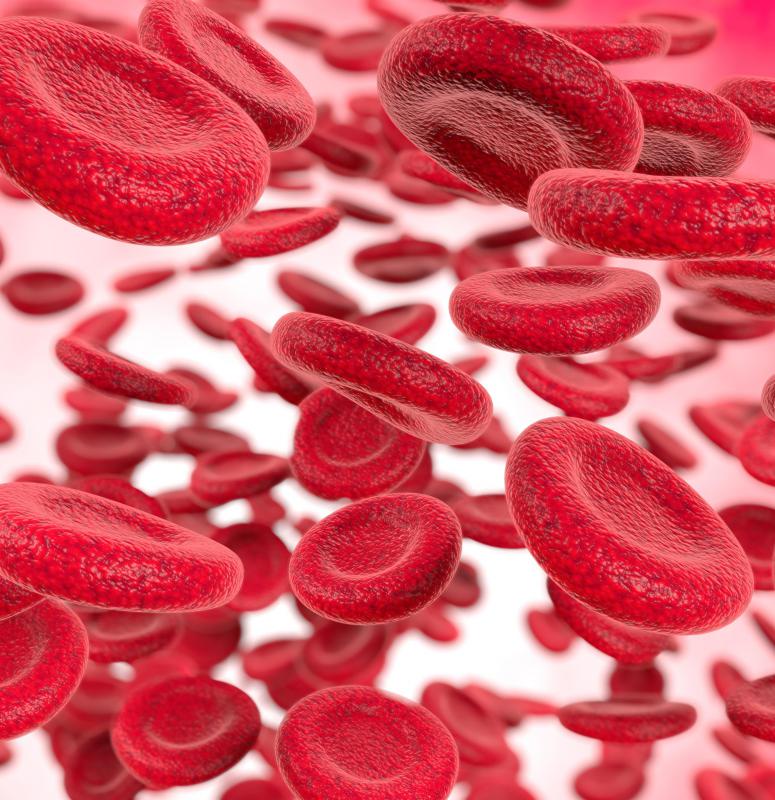At TheHealthBoard, we're committed to delivering accurate, trustworthy information. Our expert-authored content is rigorously fact-checked and sourced from credible authorities. Discover how we uphold the highest standards in providing you with reliable knowledge.
What Is the History of Sickle Cell Anemia?
While it is likely that sickle cell anemia, a genetic condition which causes red blood cell abnormality, has existed for millennia, the history of scientific knowledge of the condition began relatively recently. In this sense, the history of sickle cell anemia started in 1910, when the condition was first identified by medical researchers. Over the next decades, researchers broadened their understanding of the condition, discovering, for instance, its relationship to oxygen, genetics, and hemoglobin. As of the early 21st century, the history of sickle cell anemia continues to be written as medical experts search for treatments and even cures for the condition.
Sickle cell anemia is an abnormality of the hemoglobin, a protein which is found in the red blood cells, and which is responsible for transporting oxygen throughout the body. The abnormal structure of the hemoglobin in those with the condition causes normally round red blood cells to take on a crescent shape. In turn, these misshapen cells can cause a range of problems. They can become lodged in the blood vessels, causing moderate to severe pain, and also tend to disintegrate much more quickly than normal red blood cells, leading to blood which is low in oxygen. Sickle cell anemia is genetic, and only manifests in those who have inherited the sickle cell trait from both of their parents.

Indian, Middle Eastern, and Mediterranean people can suffer from sickle cell anemia, but it most often affects those of African origin. In fact, many African tribal languages have a word for the condition, suggesting that it has been in existence for many generations. Its causes would remain unknown, however, until the early 20th century.
The medical history of sickle cell anemia began in 1910, when an American doctor named James Herrick used a microscope to study the blood cells of a Caribbean man who was experiencing body pains and lethargy. Dr. Herrick discovered that the man’s red blood cells exhibited an abnormal shape. When he published his findings, he referred to the cells as “sickle shaped,” thus giving the condition its name.

In the decades that followed Dr. Herrick’s discovery, researchers began to piece together the pathology of the disease. A team of physicians determined that the condition caused low blood oxygen levels in 1927, while two separate researchers published work which showed it to be hereditary in 1949. Two scientists, Dr. Linus Pauling and Dr. Harvey Itano, established in 1951 that a structural abnormality of the hemoglobin is responsible for the red blood cells’ sickle shape.

From the mid-20th century onward, the history of sickle cell anemia largely involves the search for effective treatments and cures for the condition. In the 1980s, it was discovered that a cure could be had with a bone marrow transplant, which replaces abnormal cells with normal red blood cells. As this procedure is extremely invasive and may not be successful, however, scientists continue to search for a satisfactory cure. In 1995, researchers discovered that a drug called hydroxyurea could significantly minimize the pain often associated with the disease.
AS FEATURED ON:
AS FEATURED ON:













Discussion Comments
There was once a belief that people with the sickle cell gene were not vulnerable to malaria. This was even taught in some Science classes. Some doctors have even told people with sickle cell that they didn't need to take the drugs that protect against malaria when they were traveling to regions where the disease was common.
This is a good illustration of the dangers of bad information.
@mobilian - Any race of people can have the sickle cell trait. As the article says, this condition is much more common in people with origins in Africa. Also, having this genetic trait does not mean you are automatically going to become ill. Many people have the sickle cell trait and don't have any pain or adverse effects associated with it.
I thought that black people are more likely to have sickle cell anemia. That's what I have always heard and from reading the article I see that is correct. I also see that the condition is not exclusive to people of African descent, so my question is do white people with European descent sometimes have sickle cell?
Post your comments